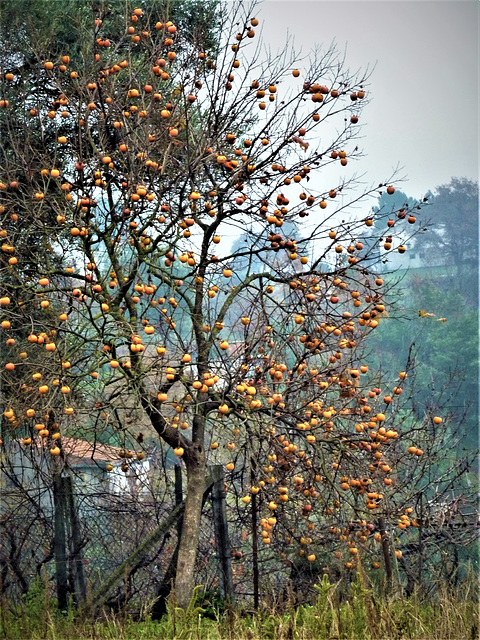Diospyros and the Double Cross II
Church - Portal after first modifications - 767 CE
December
New Home
Waiting
HFF
Estrelicia
Diospyro III with great PIP ...
Convento de Tomar
Capela de Marialva
Family
Optimism
HFF
Asteraceae
Images
Dreams
ROSA
Contador I
Contador II
HFF
Wood + PIP
Azeite - Olive oil
S. Bento Railroad Station
HFF
Chãs de Égua - II
Friends
The peace
The Light
HFF
Continuity
Christmas Sky
Old and New
HFF
Bragança II
The North
Young love
Light as a dream
Terras do Bouro
HFF
Capela
Bragança I
Templários - To him who passed away only one week…
Beauty
From Larouco to Spain
Built to last . . .
See also...
See more...Keywords
Authorizations, license
-
Visible by: Everyone -
All rights reserved
-
298 visits
Diospyros I


Diospyros is a genus of over 700 species of deciduous and evergreen trees and shrubs. The majority are native to the tropics, with only a few species extending into temperate regions. Individual species valued for their hard, heavy, dark timber, are commonly known as ebony trees, while others are valued for their fruit and known as persimmon trees. Some are useful as ornamentals and many are of local ecological importance. Now, no leaves, no flowers, no buds, only the fruits . . .
Erhard Bernstein, Berny, kiiti, Malik Raoulda and 17 other people have particularly liked this photo
- Keyboard shortcuts:
Jump to top
RSS feed- Latest comments - Subscribe to the comment feeds of this photo
- ipernity © 2007-2024
- Help & Contact
|
Club news
|
About ipernity
|
History |
ipernity Club & Prices |
Guide of good conduct
Donate | Group guidelines | Privacy policy | Terms of use | Statutes | In memoria -
Facebook
Twitter

The spherical to oval fruit, bearing the indented stem and four sepals, can weigh up to 500 grams (18 oz). The smooth, shiny, thin shell ranges in shade from yellow to red-orange. The slightly lighter fleshed fruits can contain up to eight seeds and may have an astringent taste. With increasing maturity, the fruit softens, similar to a kiwifruit. The high content of tannin in the still-immature kaki provides a bitter component reminiscent of a raw unpeeled chestnut, which becomes weaker with progressive maturation. The furry taste, caused by the tannins, is reduced and finally completely disappears during the ripening process. It is very important to know that there are four basic types of kaki varieties. This classification depends on the tannin solubility and the presence of seeds. Soluble tannin means that the fruit will have an acrid taste.
In China, kaki has been cultivated since time immemorial. It is considered to have four virtues:
• It lives long.
• It gives a large area of shade.
• It is used by the birds as a nesting place.
• It is not attacked by pests.
They are sold everywhere around here and because they have no or almost none, seeds they are very well accepted by babies and most people.
Thank you Maggs.
Please see the answer now added for Jaap.
Sign-in to write a comment.